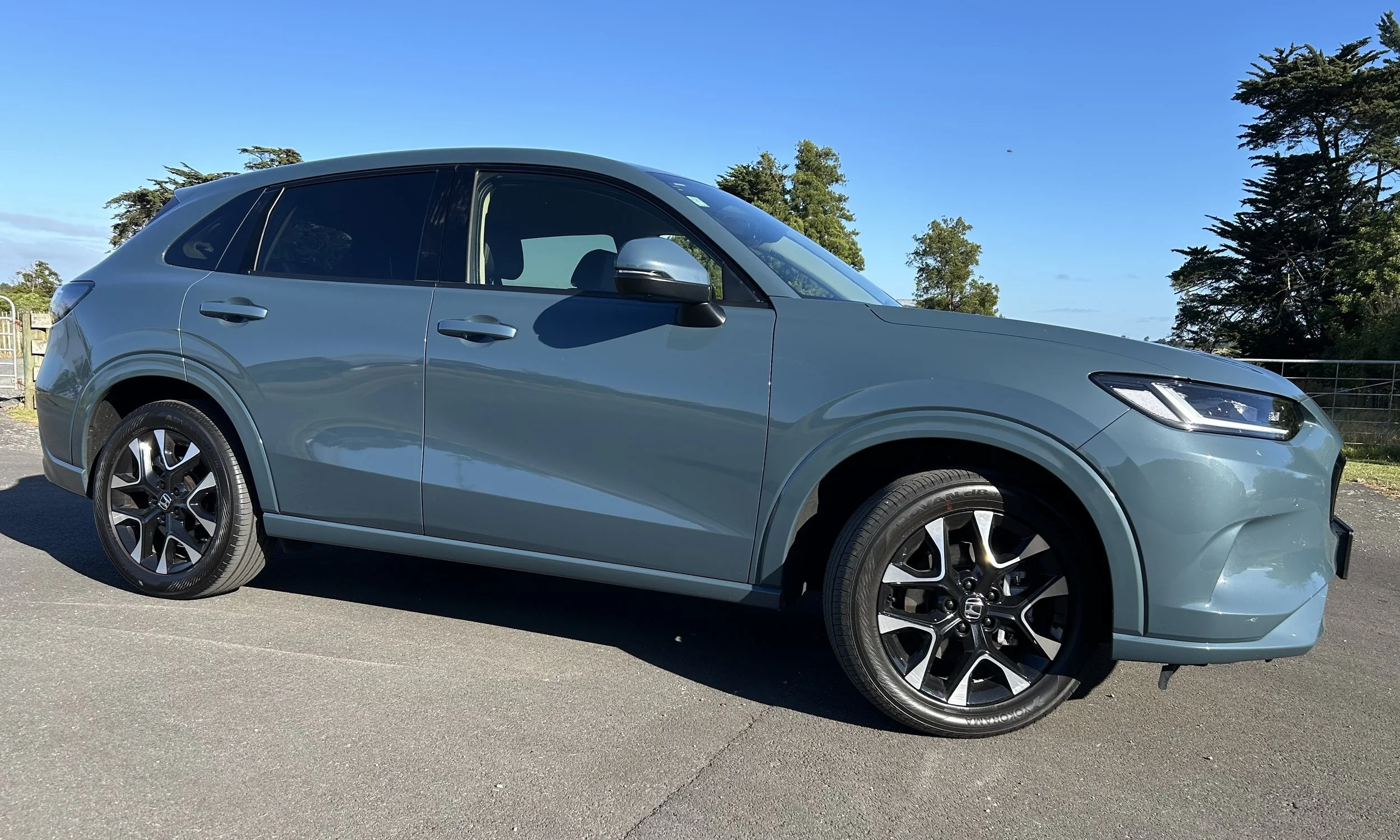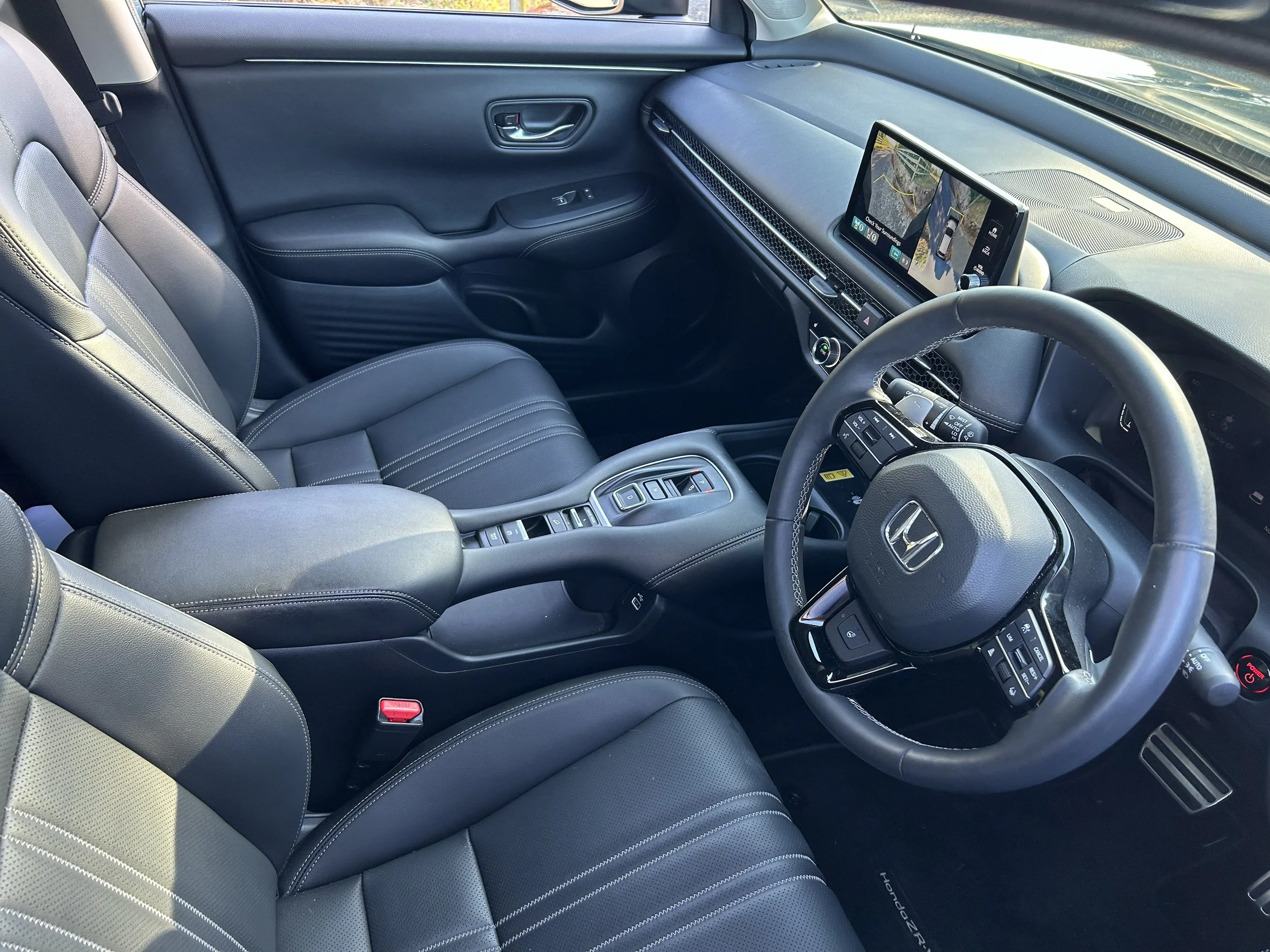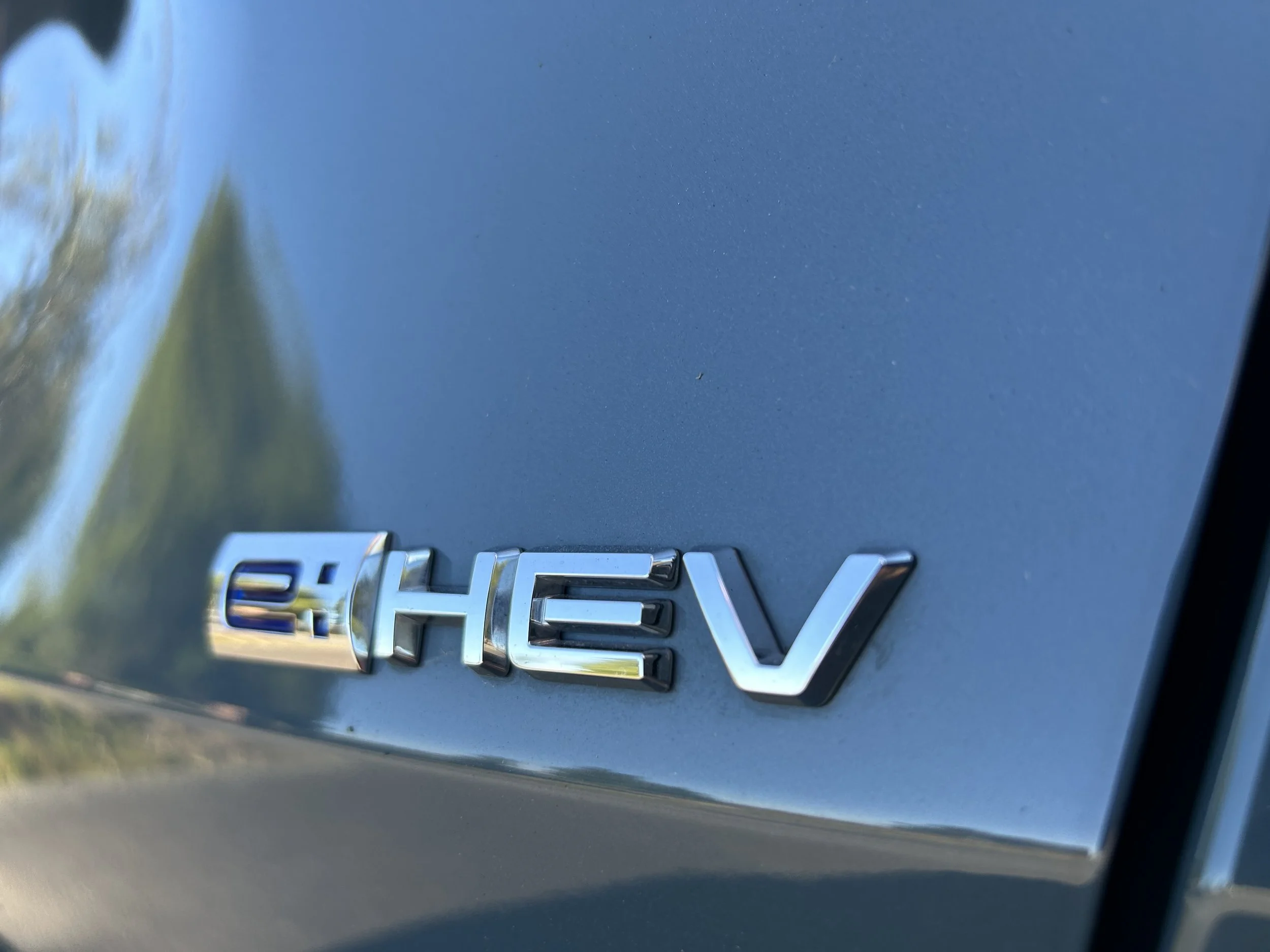Honda ZR-V Sport road test review: Quiet achiever
/The drawcard here is less about what you see than what you get.
How much: $55,000.
Powertrain: 2.0-litre four-cylinder petrol with two motor Hybrid, e-CVT; maximum power 135kW; maximum torque 315Nm.
How big: 4568mm long, 1840mm wide, 1620mm high, 2655mm wheelbase.
We like: Impressively restrained consumption; right-sized for urban zapping.
Not so much: Infotainment graphics; compact boot.
JUDGING a car on looks alone is all and well and good, but that approach really doesn’t do the ZR-V justice.
That’s simply because Honda, first and foremost, is a brand that has made its name, and fortune, through having put ‘engineering’ on the highest pedestal.
That’s not to say it disregards other facets; but it simply reflects that this is a make that understands there’s more to car-making than first meets the eye.
That’s definitely the case with the make’s smallest sports utility.
From a week’s exposure, I can attest the ZR-V drives well and the cabin quality is very solid. It was let down a bit by having a relatively small boot and so-so infotainment technology. Also, I’d wager it’s not a car that is brazen in kerb side appeal. Some will decide the design is quiet others might call it underwhelming.
What makes it different to others in the category? As so often is the case with Honda, it’s the mechanical element. In placing the Civic's brilliant hybrid system under the bonnet of a crossover that is a little longer than the defunct HR-V and noticeably shorter than the new CR-V, Honda has played something of a trump card.
Given that the ZR-V, in size and price, sits in the heartland of family SUV sales, you’d have to wonder why there aren’t more of them about. Technically-speaking, it has has the right ingredients on paper.
To qualify that statement, be aware there are two models to choose from, one called Turbo the other Sport. The latter is the one on test here and carries a $8000 premium.
The Turbo model has a 1.5-litre, four-cylinder turbocharged engine mated to a constantly variable transmission (CVT), pumping 134kW power and 240Nm torque. The Sport is more advanced, as it delivers with e:HEV. That’s a Honda codex that signals it marries a petrol engine to an electric drivetrain.
In this instance, there’s a 2.0 direct injection engine, with no turbo, allied with two electric motors, one which acts as a generator to recover kinetic energy via regenerative braking which it then feeds to a small battery or the electric motor that drives the wheels.
On its own, the 2.0-litre engine manages 104kW of power and 182Nm of torque but when you add two electric motors, this means 135kW of power and 315Nm of torque.
Until it gets fully electric drivetrains here, e:HEV is the top dog tech for Honda NZ.
It's a very cleverly engineered system, essentially using the engine as an on-board power station for the electrics, which drive the wheels most of the time.
That makes it a bit different to s e-Power, which is set to be the ZR-V's nearest rival and uses a similar hybrid system, but never to point of driving the wheels by petrol power.
Honda’s does, but basically only when the car is on the open road. Around 100kmh a clutch will engage and the engine powers the wheels directly, though when seems dependant on how much load the car is sensing. At even pace and on a flat surface, it might not bother for a while.
Other makes have petrol-electrics that operate this way, but Honda takes a new route by not bothering with a gearbox as such. The electric motor doesn't need one and the petrol engine only powers the wheels directly in certain circumstances.
As with a fully electric car, then, the driver has no transmission lever to utilise. In this case there are buttons for selecting forward, reverse, neutral and park. Don’t worry; it’s an easy and straightforward acquaintance.
With just two pedals, it effectively works like an automatic and behaves like one as well.
Honda has given the powertrain simulated 'shift points' where the engine revolutions drop as they would in a gear shift. This isn’t strictly necessary, but comes about because the brand feels customers will appreciate that it lends a feeling of engagement. The paddle shifters behind the steering wheel aren’t for that purpose, but instead are lend involvement with how much braking regen you want. It doesn’t have a memory so, as soon as you stop, will reset itself.
The peakiness is at no detriment to the core appeal; it’s an astoundingly refined powertrain. Even when the petrol engine steps in - sometimes just to keep the battery charged - it’s very quiet. So much so that there are occasions when transition from electric to petrol power is essentially imperceptible.
The only occasion when you do have to put up with some mechanical intrusion is when putting your foot down. That’s not going to happen too often because the drivetrain has, thanks to the electric motors, decent oomph. So it not only feels quite punchy at low speeds, but the difference between mid and full throttle seems to be fairly minimal. Advice from another writer who’d experienced the car about a light touch being enough to yield more refinement and only marginally less performance was spot on.
Driving it this way certainly yields a result that Honda buyers tend to appreciate most: Thrift.
An official fuel consumption figure of less than six litres per 100km seems a big call, but in reality the ZR-V seems to have utmost commitment to seeing it realised, not least within the urban environment, which is likely to be its major stomping ground. In that arena, you don’t have to worry about it being treated to a 57-litre fuel tank; that’s a modest capacity you will still get loads of driving from it. Honda cites 966km for a conservative driver. And it’ll also be happy drinking 91 octane. How good, right?
ZR-V’s suitability for suburban environments also shows in how it presents. SUV ethos requires the driver to sit a bit higher than they would in a regular hatchback, but because it is based on the eleventh-generation Civic, it is overall very alike overall.
There’s a similar interior treatment with the slim dash-width grille, a big touchscreen and a multi-function steering wheel, plus lots of soft-touch materials. The grey on grey, with more grey, interior hue of the test example was a little sad, but the build quality was exceptional.
Honda's latest touchscreen technology is better than it used to be, but presentation is not quite up to where others have gone; that’s mainly in respect to the conservative look of the icons. That said, the screen responses are sharp and it works well with smartphone coupling technology. It also comes with a reasonable reversing camera. It is load with safety gear and comes with a five-star ANCAP credential.
The occupant zone is fine for space. It’s not palatial by any means, but is fine for a user who, likely as not, might only expect to have him or herself and one other in there for much of the time. The car’s width means four adults will sit in greater comfort than three across the back seat, but there’s ample legroom and headroom is okay. The boot is neatly shaped, but the 380 litres’ capacity is more useful but than amazing in this category. Still, as said, kudos for the flat floor and clean edges. Stage options are also a bit on the tight side; that an under-console storage bin, for instance, is really just for small items like phones and keys rather than a compact bag.
As much as the car’s overall size, and quick steering, makes it good fun for nipping around town, it isn’t deterred by open road driving. There is some blight from road roar generated by coarse chip, and the steering could do with more feel at 100kmh, but overall it’s okay for distance running. The platform feels stable and the ride is decent.
It’s fair to suggest this is an SUV that makes no particular effort to demonstrate any great off-roading aptitude. Doubtless it will cope fine with light-duties off-seal escapades, and kudos to Honda for giving it a bit of ground clearance and a hill descent control as standard, but the 225/55 R18 rubber is emphatically seal-sorted and nothing lends impression it’s a car in which you should plan full-scale adventures into the unknown. Honda knows its audience and has tailored accordingly.
The relative lack of visual drama is something you need to cope with. Maybe a more vibrant colour than the blue-grey here would help lift it, but even then there’s still nothing particularly outrageous about the look, save that the grille is a bit … well, someone said ‘koi carp’ and it kinda stuck.
Like I said, the quiet looks shouldn’t be a distraction from the real achievement, which is the drivetrain, and that’s quite brilliant in its application. But, perhaps, you’d expect morning less from a brand that, in addition to making cars, also produces lawn mowers, motorcycles, outboard motors, a jet and a humanoid robot.





















